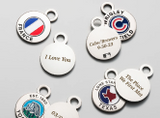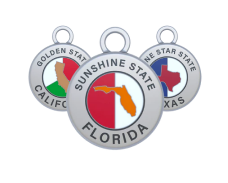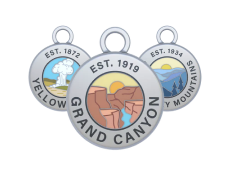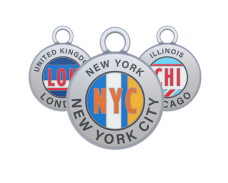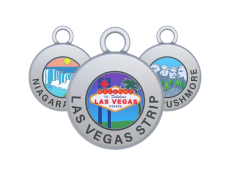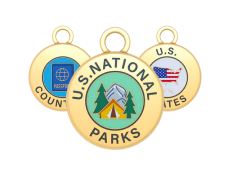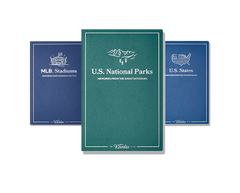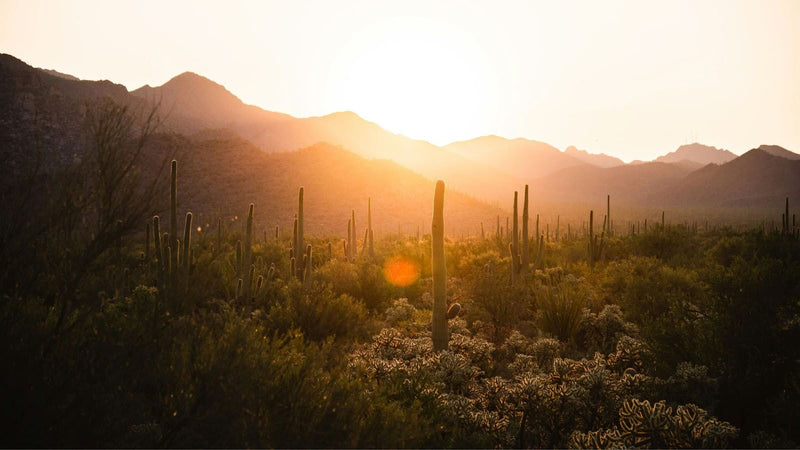
Key Takeaways:
- Iconic Desert Adventures: Experience iconic activities in Saguaro National Park such as hiking through cactus forests, stargazing under some of the darkest skies in the Southwest, and exploring seasonal wildflower displays or ancient petroglyph sites.
- Safety & Stewardship In The Sonoran Desert: Honor Leave No Trace principles and prioritize desert safety by staying on trails, being aware of wildlife, and carrying essential hydration, sun protection, and navigation tools.
- Seasonal Highlights For Your Visit: Visit during optimal seasons like winter for cooler temperatures, spring for blooms and birdwatching, or fall for fewer crowds and vivid photography opportunities, while respecting the desert's rhythms and unique wildlife.
Saguaro National Park offers a rare chance to immerse yourself in the rugged beauty of the Sonoran Desert. From winding hikes through towering cactus forests to peaceful stargazing under clear desert skies, the park invites exploration in every season. Wildlife sightings, scenic drives, and unique photo opportunities make each visit distinct. Knowing how to plan for desert conditions and where to focus your time ensures you’ll experience the best of this remarkable landscape.
At The Wander Club, we turn travel into lasting memories with thoughtfully crafted keepsakes. Each piece is designed for quality, personalization, and purpose, helping travelers carry reminders of the places they’ve visited and the moments that shaped them.
In this blog, we’ll examine the most rewarding things to do in Saguaro National Park, including hiking among giant saguaros and watching desert sunsets to stargazing under pristine night skies, along with seasonal tips, safety essentials, and nearby experiences that enrich your visit.
Top Activities In Saguaro National Park
Saguaro National Park is a love letter to the Sonoran Desert with vast skies, forests of iconic cacti, and a hush that settles in as the sun dips behind the Tucson Mountains.
Here are some can’t-miss experiences that can turn a quick visit into a story you’ll tell for years:
1. Hike The Cactus Forest
Start with the Cactus Forest Loop Drive (east district) and branch onto short trails like the Desert Ecology Trail and Freeman Homestead Trail. You’ll walk among towering saguaros, each one a character with its posture and history. Go early for soft light and wildlife sightings. gila woodpeckers tapping out a beat, jackrabbits flashing through creosote.
2. Tackle The Big Views
Take the Wasson Peak Trail via King Canyon (west district) for a panoramic payoff. The climb is steady, the breeze welcome, and the summit gives you a 360-degree look at Tucson and the desert’s rolling sprawl. Bring plenty of water and a brimmed hat; even in winter, the sun doesn’t play nice.
3. Sunset At Gates Pass
Technically, it's just outside the park’s west district, but it's too good to skip. Golden light drapes over the saguaros, and the silhouettes stack like a brushed steel skyline. Arrive early to park and find a quiet perch. Stay through the afterglow; the color lingers longer than you expect.
4. Desert Museum Pairing
Spend a morning at the Arizona-Sonora Desert Museum, then head into the park with fresh eyes. You’ll start recognizing ocotillo, cholla, and palo verde like old friends, and you’ll know not to touch the teddy bear cholla, no matter how cuddly it looks.
5. Scenic Cycling
Ride the loop in Saguaro East for a rolling, car-accessible tour that delivers constant scenery. The climbs are honest, the descents smooth, and the road shoulders generous. Start early, ride clockwise, and savor the stretches where saguaros line up like spectators at a hometown race.
6. Birding On The Bajada
In the west district, the Bajada Loop Drive puts you on the doorstep of easy walks where thrashers, cactus wrens, and gilded flickers show up like clockwork. Bring binoculars and pause often, desert birds announce themselves in bursts of song and flashes of motion.
7. Wildflower Window
After a rainy winter, spring flips the desert’s color switch. Look for Mexican gold poppies and lupine splashed across hillsides, especially in the west district. Early morning is best for crisp petals and cooler air.
8. Ranger-Led Walks
If timing aligns, join a guided program to learn desert survival tips, saguaro lifecycles, and stories that make the terrain feel alive. You’ll never look at a boot print or a woodpecker nest hole the same way again.
Seasonal Guide: When To Visit For The Best Experience
Saguaro National Park shifts with the seasons like a living thing, like the desert is breathing alongside you. Timing your visit right means better trails, deeper quiet, and a front-row seat to the slow drama of the Sonoran.
- Winter (Dec–Feb): Cool days in the 60s make this the best time for long hikes. Wildlife is active in the mornings, and the skies are perfect for stargazing. Dress in layers for cold nights.
- Spring (Mar–Apr): Wildflowers and possible cactus blooms colorfully fill the park. Temps rise into the 70s–80s, ideal for sunrise and sunset hikes. Birding is excellent, with cactus wrens especially active.
- Early Summer & Monsoon (May–Sep): May–June bring extreme heat, so hike pre-dawn and carry plenty of water. Monsoon season (July–Sep) offers dramatic sunsets, cloudscapes, and lightning shows, but watch for flash floods.
- Fall (Oct–Nov): Comfortable temps return, crowds thin, and post-rain scents sharpen. An excellent season for longer loops and golden-hour photography, with saguaros casting long, dramatic shadows.
Stargazing In One Of The Darkest Skies In The Southwest
When the sun slips behind the Tucson Mountains, the desert turns into a quiet, vast, and humbling planetarium, and the saguaros become silhouettes. Saguaro National Park’s two districts deliver stellar views, but the eastern Rincon Mountain District typically edges out with darker skies and broader horizons.
Where To Go
For unobstructed sightlines, head to the Mica View Picnic Area or the Broadway Trailhead in the East District. In the West District, Gates Pass (just outside the park) offers dramatic vantage points, while Signal Hill provides a vast, open dome of sky once the day-trippers leave.
When To Go
Aim for a new moon or the nights bracketing it. In summer, the Milky Way core arches high and bright; in winter, Orion commands the stage. Check a light pollution map and the park’s operating hours before you set out.
What To Bring
A red-light headlamp to preserve night vision, a star chart app in offline mode, a light jacket (desert temps drop fast), and plenty of water. Bring a tripod and set your camera to a wide aperture, high ISO, and 10 to 20 second exposures if you're photographing.
How To Settle In
Arrive before twilight to let your eyes adjust. Park in designated areas, walk a short distance onto a flat stretch of trail, and give yourself time. The longer you wait, the more stars appear, like a slow fade-in on an old film reel.
What To Look For
In late spring through early fall, trace the Milky Way’s dust lanes pouring over the saguaros. Spot Scorpius hugging the southern horizon and the teapot shape of Sagittarius brewing up the galactic center. In cooler months, follow Orion’s belt to Sirius, the brightest star in the night sky. Perseid and Geminid meteor showers can turn the park into a spark factory; face away from Tucson’s glow to boost your count.
Desert Etiquette
Stay on established paths and avoid shining lights at wildlife. Sound travels far here; keep voices low and let the quiet talk. Pack out every crumb and cap so the night stays wild for whoever comes after you.
Packing Essentials For A Desert Adventure
Packing for a desert trip means balancing sun protection with readiness for cooler nights. The right gear keeps you safe, comfortable, and prepared for the unique challenges of dry, rugged terrain.
- Water Strategy: Bring more than you think you’ll need. Aim for at least one gallon per person daily, split between a hydration reservoir and a backup bottle. Electrolyte tabs help you stay sharp when the sun ramps up.
- Sun Armor: Wear a wide-brim hat, polarized sunglasses, a UPF long-sleeve shirt, and a lightweight neck gaiter. Broad-spectrum SPF 30+ and SPF lip balm are non-negotiable. Reapply like your hike depends on it—because it does.
- Smart Layers: Desert temps swing hard. Pack a breathable base layer, a light fleece or puffy for sunrise and stargazing, and a wind-resistant shell for those gusty ridgelines.
- Footing You Can Trust: Broken-in hiking shoes with solid grip, moisture-wicking socks (bring a spare pair), and blister tape. Gaiters help keep sand and cactus bits where they belong, off your ankles.
- Navigation Backup: Download offline maps, carry a paper map and a compass, and don’t assume cell service will save you. Battery banks keep phones and headlamps alive past sunset.
- Safety Kit: A compact first aid kit (including tweezers for cactus spines), whistle, multitool, and small emergency blanket. A headlamp with fresh batteries beats a phone flashlight every time.
- Desert-aware Snacks: Include high-calorie, no-melt options like nut butters, jerky, dried fruit, and energy chews. Stash a “just-in-case” reserve you won’t touch unless needed.
- Night-sky Readiness: Red-light headlamp to preserve night vision, a compact tripod for astrophotography, and a warm layer—even in summer, nights can bite.
- Leave No Trace Kit: This kit includes zip bags for trash, a small trowel, biodegradable wipes, and a microfiber towel. Pack it all out, every time.
- Vehicle Prep: Extra water in the trunk, coolant, a sunshade, and a tire repair kit. Remote trailheads feel bold until you need a plan B.
Wildlife Encounters In The Sonoran Desert
The Sonoran Desert hums with life at dawn and dusk, especially after summer rains when creosote perfumes the air and everything seems to exhale. If you slow down, you’ll start noticing patterns: lizard skitters in your periphery, a sudden hush before a hawk glide, the soft thrum of insect wings rising like applause.
Roadrunners
Watch for that flicker of brown and white sprinting across sandy washes. They don’t meep but strike like lightning at lizards and snakes. Early mornings along Bajada Loop Drive often deliver the best sightings.
Gila Monsters
Rare, radiant, and slow, like a living artifact. Give it space if you’re lucky enough to spot one in spring or early summer. Their bead-like scales glow orange and black in the sun, a reminder that desert beauty can also be venomous.
Javelinas
Not pigs, but collared peccaries with social dynamics that are equal parts sitcom and soap opera. You’ll smell them, musky and earthy before you see them, usually near prickly pear patches. Stay respectful and keep your snacks tucked away.
Desert Bighorn Sheep
Ghosts on the rock faces. Scan high ridgelines in the Rincon Mountain District with binoculars; their curved horns and careful steps blend into the granite. Patience and a steady gaze pay off here.
Harris’s Hawks
Cooperative hunters, which feels downright revolutionary in a world that celebrates lone wolves. Look for stacked silhouettes on saguaros and utility poles, strategizing as a family before they sweep low over the scrub.
Coyotes
Tricksters that write the desert’s soundtrack. You might catch one trotting the park road shoulder at dusk, all business and bright eyes. Give them the right of way; they’ve got a night shift to clock in for.
Desert Tortoises
Quiet elegance with a 50-year calendar. If you encounter one on the trail, never pick it up; stress can cause them to release precious water reserves. Step aside, admire, let time do what it does best.
Bats And Night Pollinators
When the sky purples, lesser long-nosed bats arrive like tiny meteors, dipping into saguaro blossoms and transferring tomorrow’s forests on their faces. A red-light headlamp protects their rhythm and your night vision.
Final Thoughts
You’ll leave Saguaro National Park with sand on your boots, star maps in your head, and that sun-warmed stillness you can’t stream or download. That’s the point. Now it’s your turn to keep the story going.
As you hike back to the trailhead, think about the small rituals that make memories stick. Press a palm to a saguaro’s shadow at sunset. Share trail snacks with someone who needs a boost. Name the night sky’s brightest spark for a promise you intend to keep. Then mark the moment for good: add a Saguaro National Park Token to your Wander Club Holder and engrave the date.
Read also:
- Yosemite National Park Guide: Hikes, Views, And Must-See Spots
- Glacier National Park Itinerary: What To See And Do During Your Stay
- The Ultimate Zion Bucket List: What To Do And Where To Go
Frequently Asked Questions About Things To Do In Saguaro National Park
When is the best time of year to visit Saguaro National Park?
The best time to visit Saguaro National Park is from late fall to spring, with November to March offering mild 60s°F to 70s°F days, cool evenings, and ideal light. Spring brings wildflowers and May to June cactus blooms. Summer is extremely hot with monsoons, requiring early starts and caution.
What are the top hiking trails in Saguaro National Park?
Top hiking trails include Valley View Overlook and Signal Hill in the West and Mica View Loop and Tanque Verde Ridge in the East. Each offers unique scenery, from petroglyphs to cactus forests, and has difficulty levels for every hiker.
Is stargazing popular in Saguaro National Park?
Stargazing is exceptional, especially in the Tucson Mountain District for darker skies or the Rincon Mountain District for moonlit saguaro silhouettes. New moon nights are best for Milky Way views—pack a red-light headlamp and layers.
Are there guided tours available in the park?
Guided tours include seasonal ranger walks, volunteer-led activities, and local outfitter trips for hiking, birding, and astronomy. Self-guided drives like Cactus Forest Loop and Bajada Loop are also popular.
Where can you see the most saguaro cacti?
Head to Tucson Mountain District’s Valley View Overlook, Bajada Loop, or Golden Gate Road for dense saguaro views. Rincon Mountain’s Cactus Forest Loop offers striking cactus stands with broad landscapes. Sunrise and sunset add color and wildlife activity.
Are there wheelchair-accessible trails?
Wheelchair-accessible trails include the paved Desert Discovery Nature Trail in the West and firm Mica View segments in the East. Both visitor centers are fully accessible, making them ideal for inclusive, multi-generational trips.
